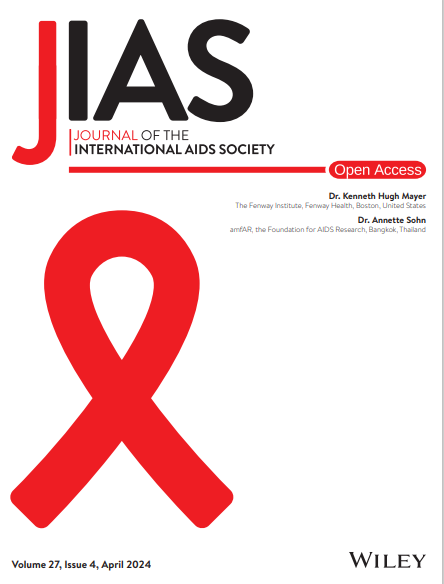Person-centred HIV care and prevention for youth in rural South Africa: preliminary implementation findings from Thetha Nami ngithethe nawe stepped-wedge trial of peer-navigator mobilization into mobile sexual health services
Abstract
Introduction
Despite the efficacy of antiretroviral therapy (ART)-based prevention, population-level impact remains limited because those at high risk of HIV acquisition are not reached by conventional services. We investigated whether youth-centred and tailored HIV prevention, delivered by community-based peer navigators alongside sexual and reproductive health (SRH) services, can mobilize demand for HIV pre-exposure prophylaxis (PrEP) and ART among adolescents and young adults (AYA) in KwaZulu-Natal, South Africa.
Methods
Thetha Nami ngithethe nawe is a cluster-randomized stepped-wedge trial (SWT) in 40 clusters within a rural health and demographic surveillance site. Clusters were randomized to receive the intervention in period 1 (early) or period 2 (delayed). Trained area-based peer navigators conducted needs assessments with youth aged 15–30 years to tailor health promotion, psychosocial support and referrals into nurse-led mobile SRH clinics that also provided HIV testing, and status-neutral ART and oral PrEP. Standard of care was PrEP delivered through primary health clinics. We report SRH service uptake from the 20 intervention clusters during the first period of the SWT (NCT05405582).
Results
Between June 2022 and September 2023, peer-navigators reached 9742 (74.9%) of the 13,000 youth in the target population, 46.8% males. Among 9576 individuals with needs assessment, peer-navigators identified 141 (1.5%) with social needs, and 4138 (43.5%) had medium to high health needs. These individuals were referred to mobile clinics, with 2269 (54.8%) attending, including 959 (42.3%) males. HIV testing uptake was high (92.7%; 2103/2269), with 10.1% (212/2103) testing positive for HIV, 62 (29.2%) of whom started ART for the first time. The prevalence of HIV was higher among females compared to males (15.1% vs. 3.3%; p < 0.001). Among clinic attendees, 96.8% were screened for PrEP eligibility, with 38.5% deemed eligible and offered PrEP. Of the 1433 (63.2%) individuals tested for sexually transmitted infections (STIs), 418 (29.2%) tested positive, with females having higher STI prevalence (37.2% vs. 17.9%; p < 0.001). Of these, 385 (92.1%) received STI treatment. Among 1310 females, 769 (58.7%) reported not using any contraception at their initial visit, and 275/769 (35.8%) started contraception during the trial.
Conclusions
Community-based and person-centred approaches delivered through trained peer-navigators can link AYA with SRH and HIV prevention/care needs with mobile SRH services.


 求助内容:
求助内容: 应助结果提醒方式:
应助结果提醒方式:


